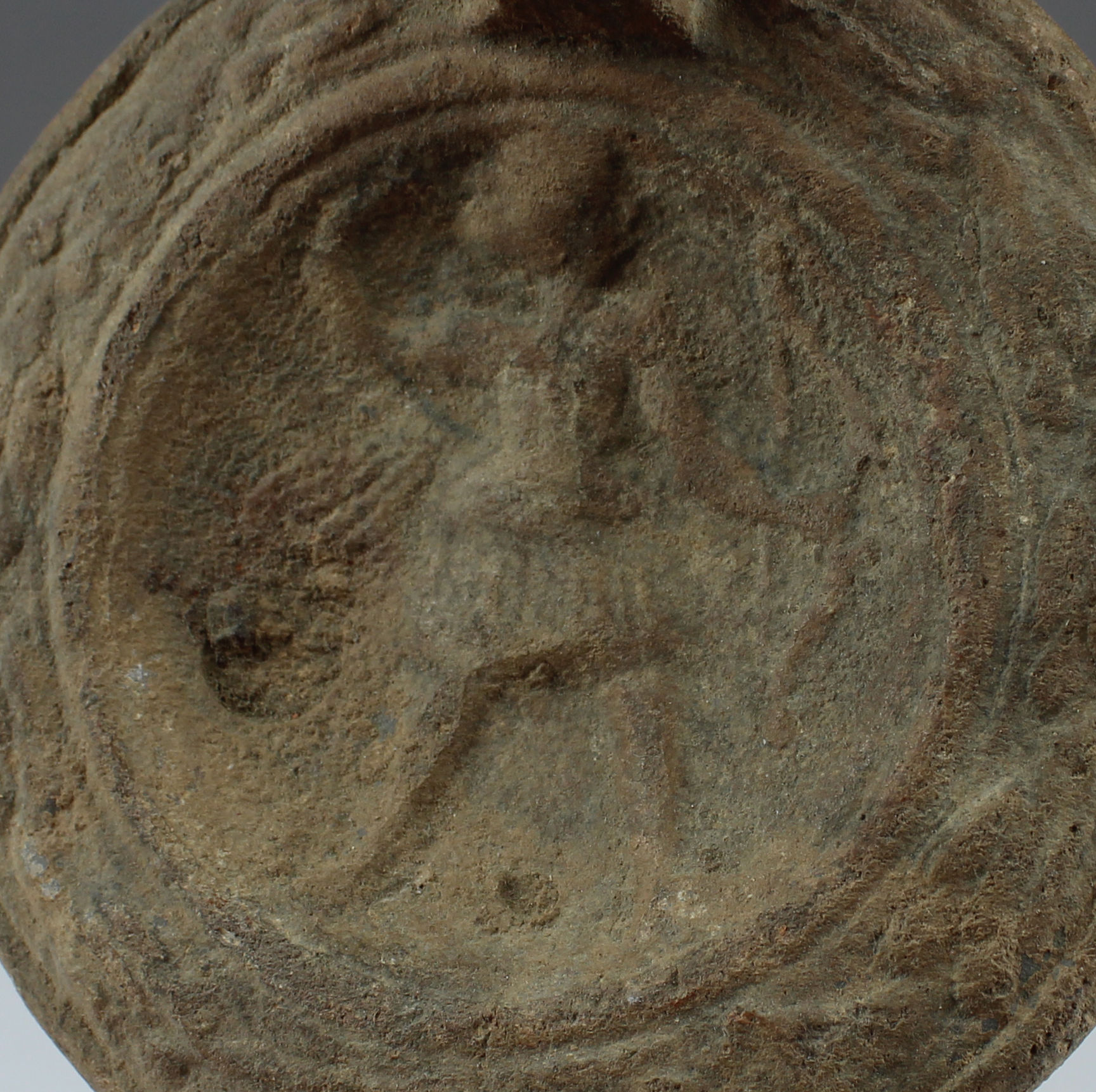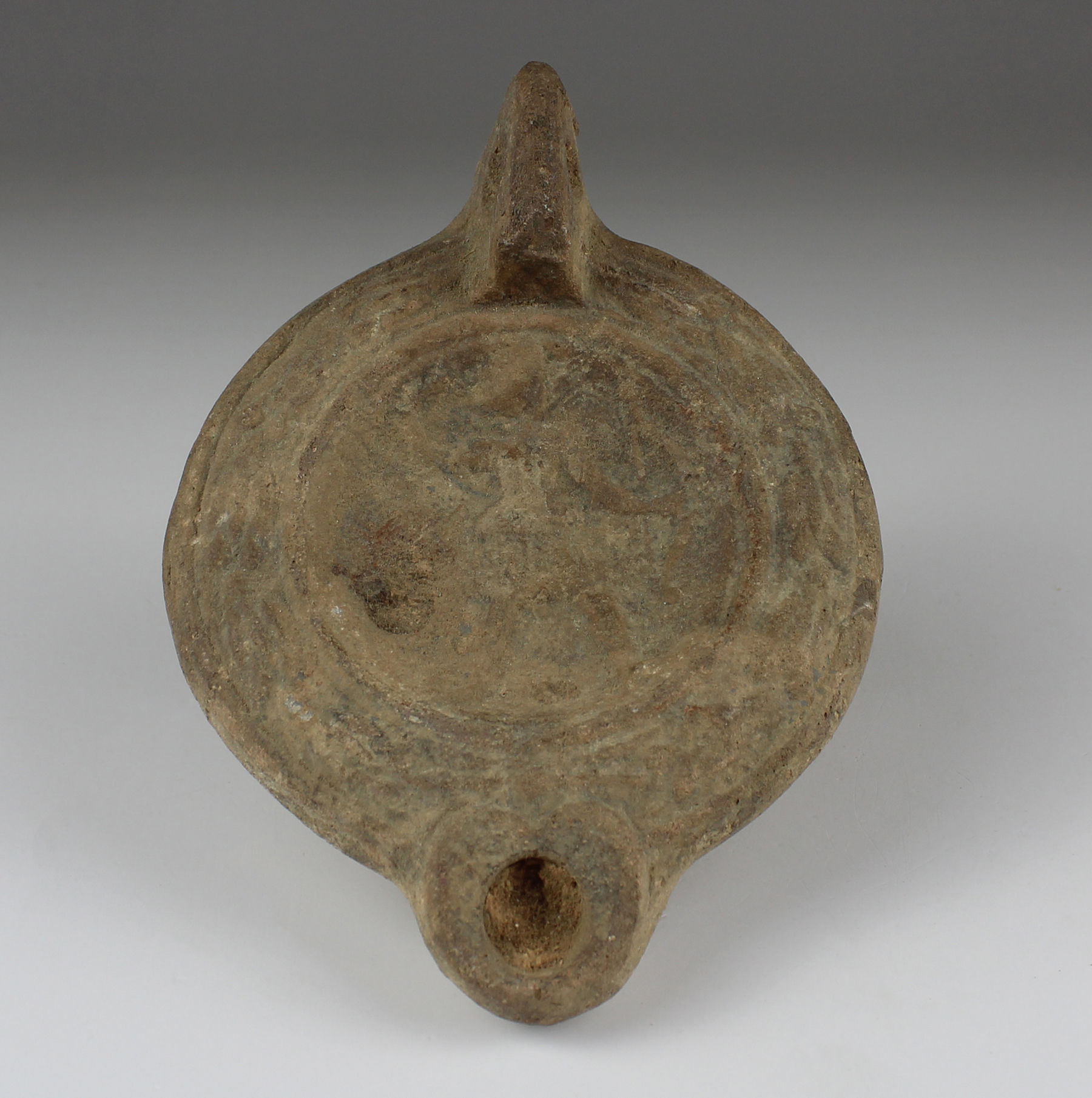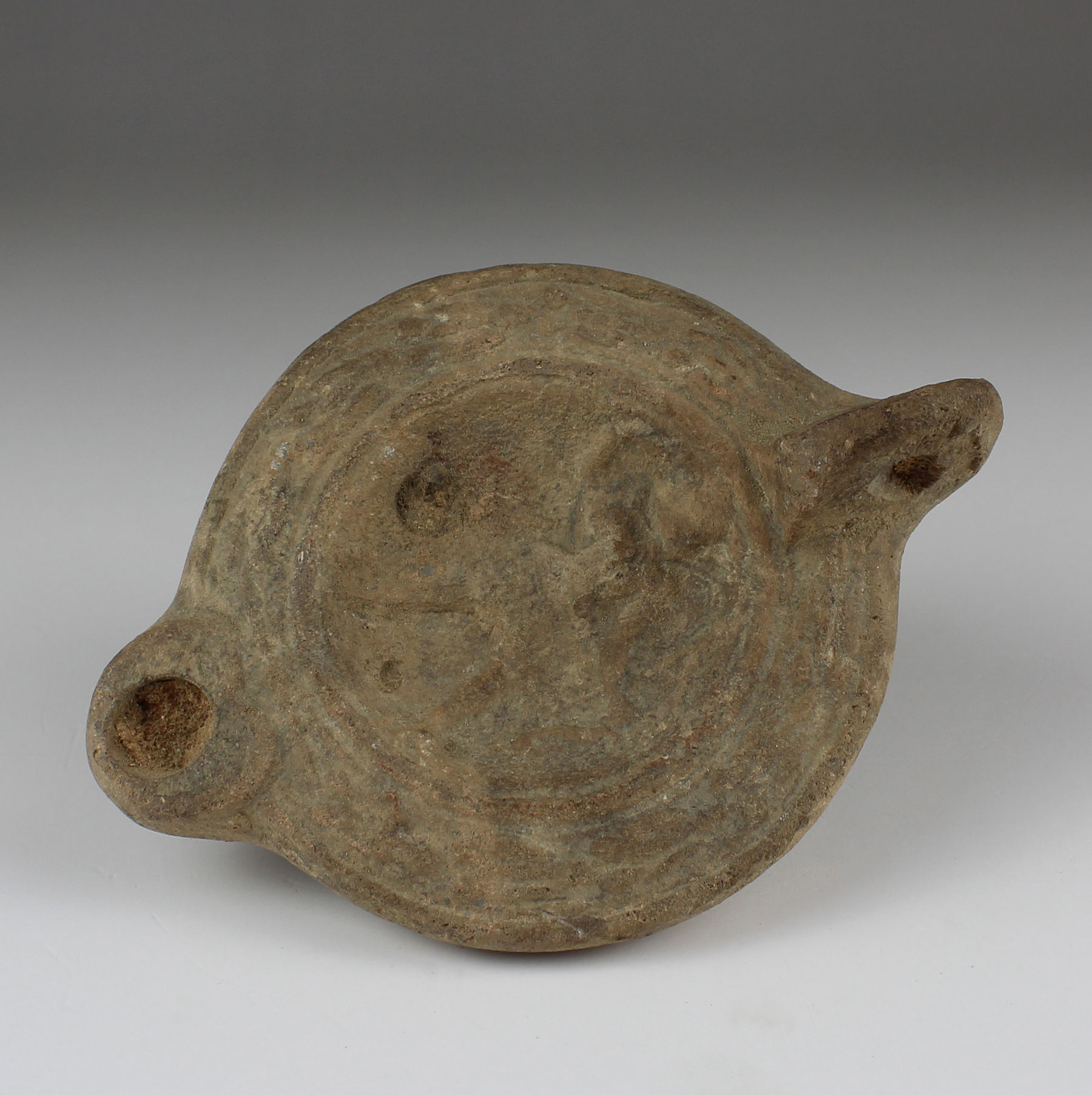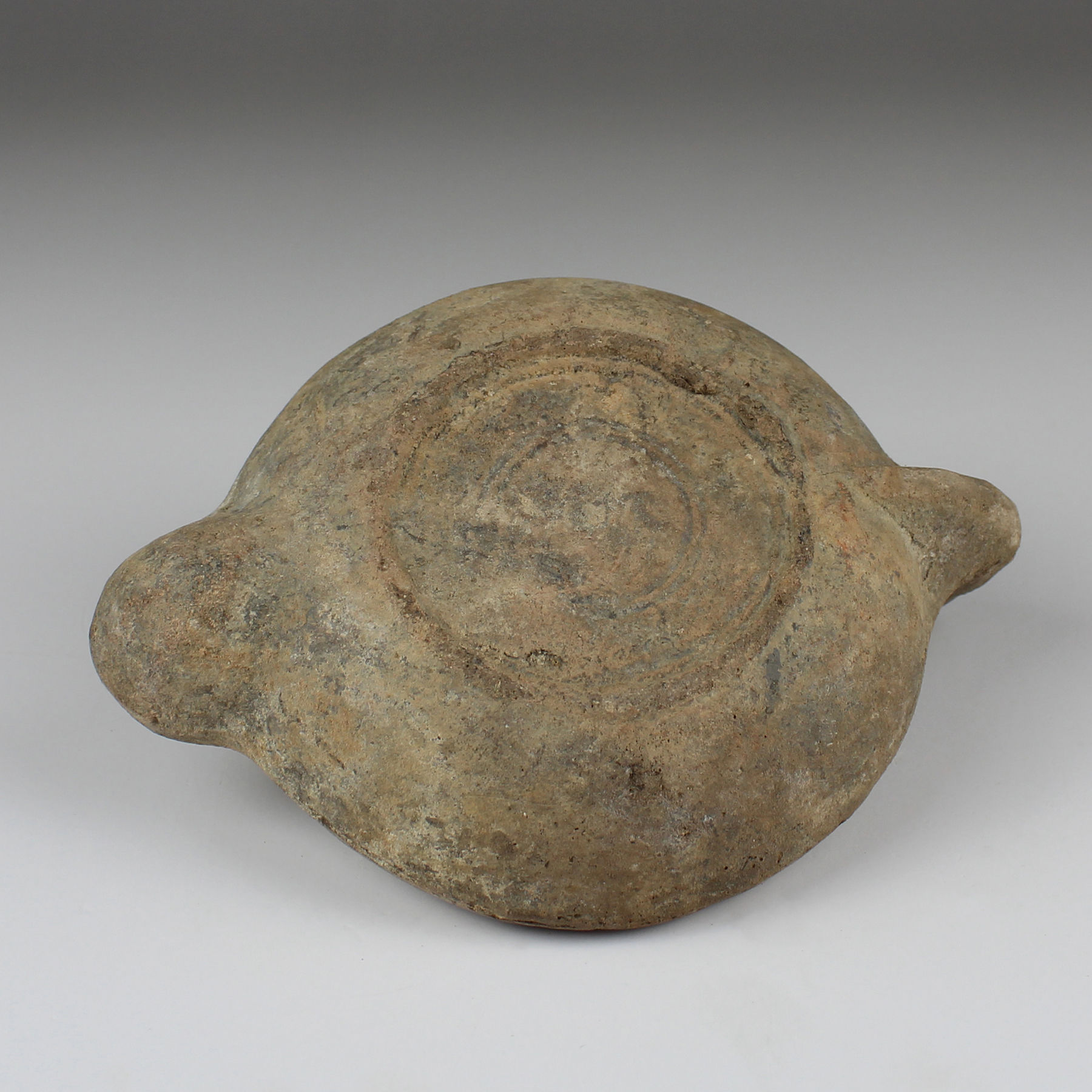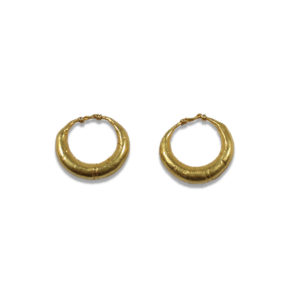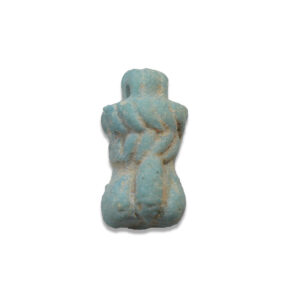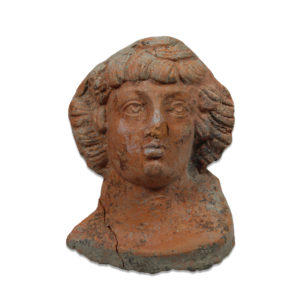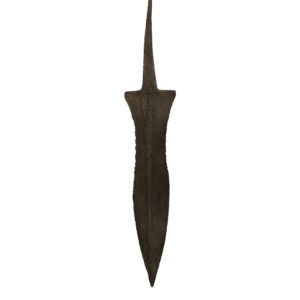Description
| ITEM | Oil lamp with Diana with bow, Type Bussière D X 4 |
| MATERIAL | Terracotta |
| CULTURE | Roman |
| PERIOD | 175 – 250 A.D |
| DIMENSIONS | 50 mm x 88 mm x 120 mm |
| CONDITION | Good condition |
| PROVENANCE | Ex Marius-Victor-Ernest Dumas private collection (North Africa and France), acquired in Tunisia between 1890 – 1920. M. Dumas was Controleur Civile (French colonial administrator) of the city of Sousse in Tunisia prior to World War I. This collection of Roman and North African antiquities has remained in the family for the past 100 years in the Haute-Savoie region of France. |
| PARALLEL | DENEAUVE J., Lampes de Carthage, Pl. LXXXVII, Fig. 961 |
Diana (among the Romans) or Artemis (among the Greeks) was the Goddess of the Moon and of the hunt. She was the virgin protectress of woodlands and wild animals, and is often depicted with a bow and arrows, which were used to punish mortals who angered her. She was the twin sister of Apollo, and the daughter of Jupiter (Zeus) and Latona (Leto).
One of Artemis’ characteristics is that she protects fertility. This may be symbolized by the spherical objects that cover the lower part of her chest, but the common assumption that they are female breasts is incorrect. They probably represent the testicles of a bull, although they may also be gourds, which were known in Asia as fertility symbols for centuries. Artemis’ robe is always decorated with lions, leopards, goats, griffins, and bulls, which represent Artemis’ title of Lady of the Animals.
Production of oil lamps shifted to Italy as the main source of supply in the Early Roman era. Molds began to be used, and lamps were produced in large scale in factories. All lamps are closed in type. The lamp is produced in two parts, the upper part with the spout and the lower part with the fuel chamber. Most are of the characteristic “Imperial Type”—round, with nozzles of different forms (volute, semi-volute, U-shaped), a closed body, a central disk decorated with reliefs and a filling hole.
With the systematic use from the 1st century BC of moulds in the process of manufacturing ceramic oi lamps, the discs, until now free of decoration, were gradually covered with a rich and varied iconographic repertoire (vegetable crowns, animals, scenes from everyday life, etc.)


